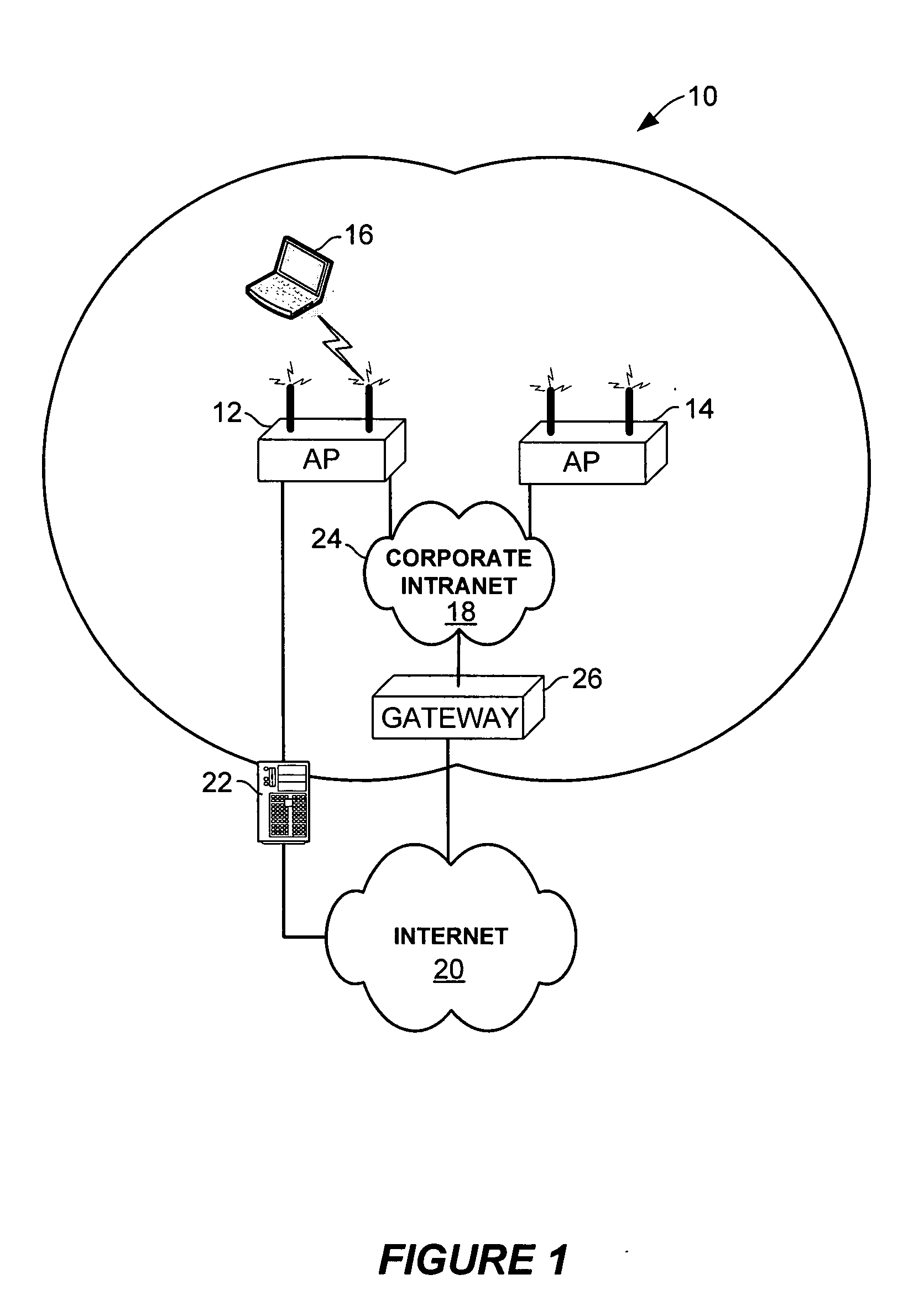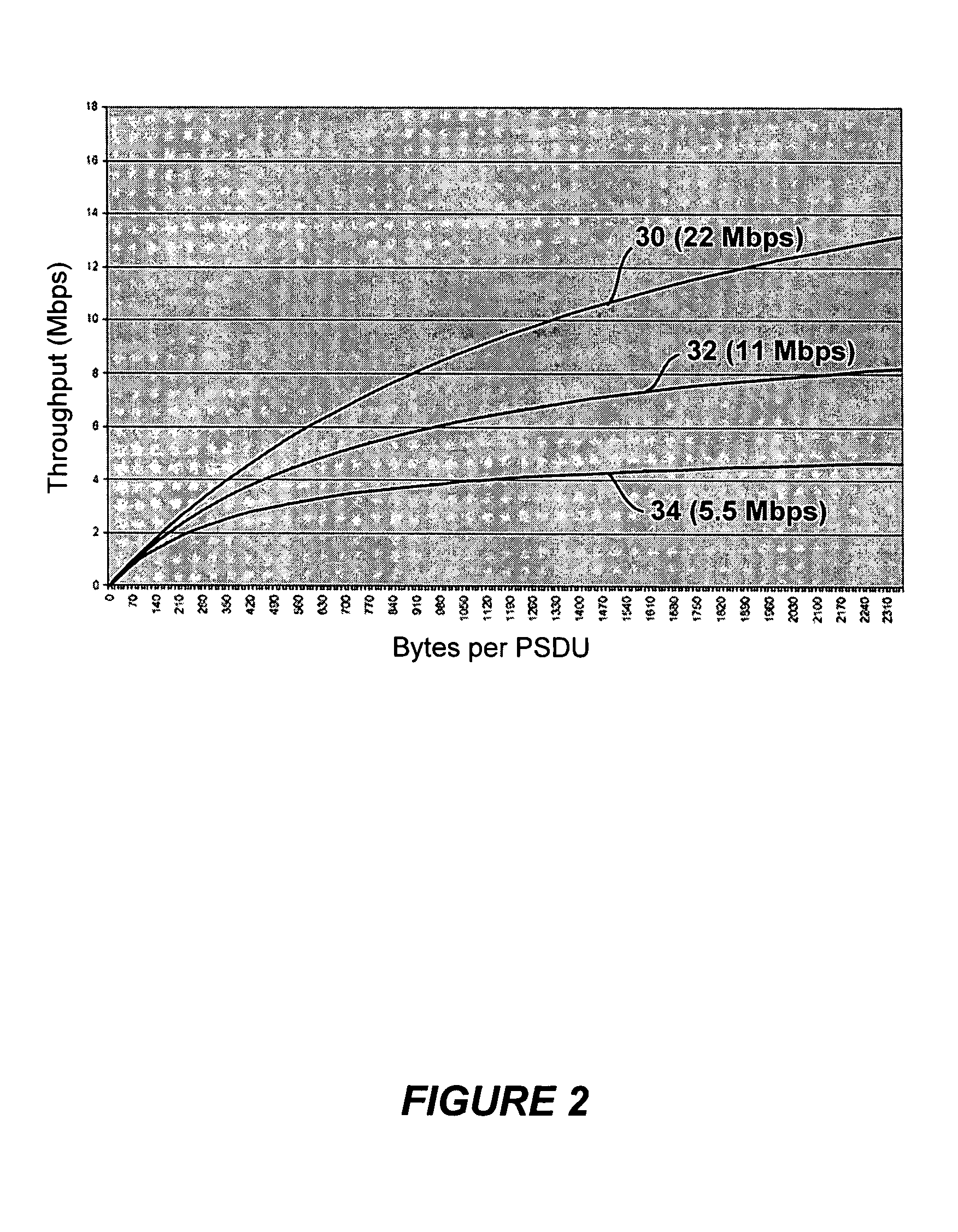Dynamic call parameter switchover and graceful degradation for optimizing VoIP performance in wireless local area networks
a dynamic call parameter and local area network technology, applied in data switching networks, instruments, frequency-division multiplexes, etc., can solve the problems of large overhead, large increase in and inability to work well above design decisions, so as to increase the quality of calls and the number of voice calls
- Summary
- Abstract
- Description
- Claims
- Application Information
AI Technical Summary
Benefits of technology
Problems solved by technology
Method used
Image
Examples
Embodiment Construction
[0025] The preferred embodiment of the present invention includes a technique of using dynamic coding-profile switchover to adapt to WLAN (Wireless Local Area Network)conditions in order to dynamically vary the number of VOIP (Voice over Internet Protocol) connections that the BSS (Basic Service Set) can support. One implementation of the preferred embodiment is in a IEEE 802.11 wireless local area network (WLAN). The term coding-profile is used to include a combination of codec, voice activity detection, and the packetization period at which the codec is operating. For a VOIP call, data packets are transmitted using a codec and a designated packetization period. For example, a call using ITU G.711 protocol with a 10 msec packetization period means that every 10 milliseconds one or more packets of voice data is formed into a frame and transmitted using real time protocol (RTP). Therefore, “G.711 with 10 msec packetization period”, “G.711 with 40 msec packetization period” and “G.729...
PUM
 Login to View More
Login to View More Abstract
Description
Claims
Application Information
 Login to View More
Login to View More - R&D
- Intellectual Property
- Life Sciences
- Materials
- Tech Scout
- Unparalleled Data Quality
- Higher Quality Content
- 60% Fewer Hallucinations
Browse by: Latest US Patents, China's latest patents, Technical Efficacy Thesaurus, Application Domain, Technology Topic, Popular Technical Reports.
© 2025 PatSnap. All rights reserved.Legal|Privacy policy|Modern Slavery Act Transparency Statement|Sitemap|About US| Contact US: help@patsnap.com



